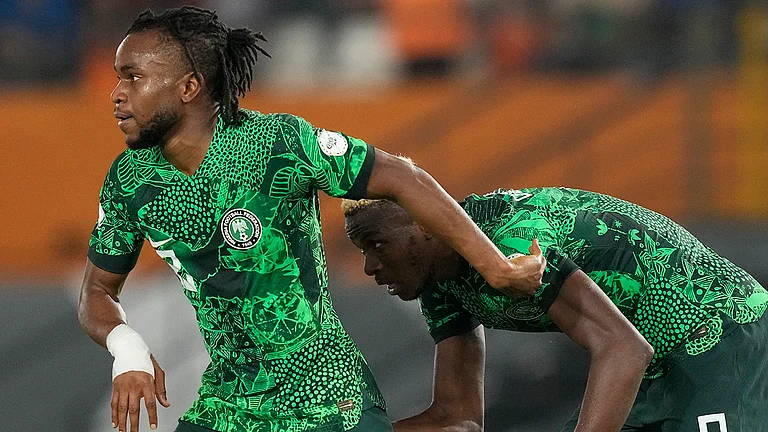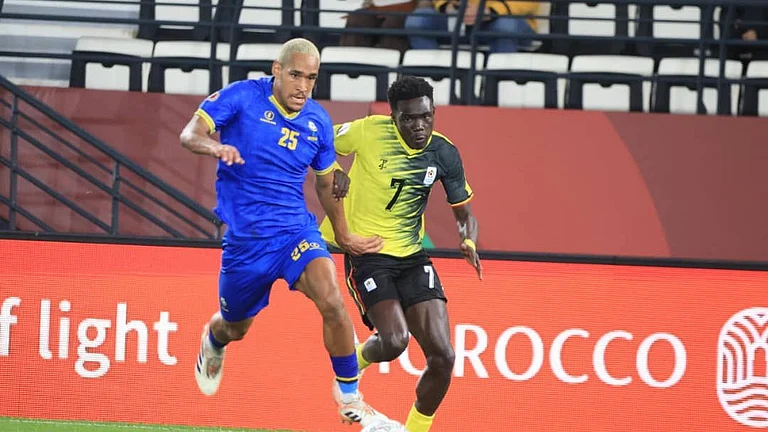Spin doctors in India and China have been on an overdrive since August 28 to explain to their respective audiences on how the stand-off at Doklam, where soldiers of the two sides faced each other off, raising the spectre of war between the two Asian giants, was resolved amicably without a single shot being fired.
But, more importantly, they had to explain as to how the resolution was reached without making any major compromise from the two countries’ stated positions.
India had moved into Doklam, a Bhutanese territory, after China started constructing a road there in violation of existing agreements. New Delhi felt that the road was designed to give China easy access to the ‘Siliguri Corridor’—a narrow passage that connects the northeastern part of the country with the mainland—posing a serious security threat. China, which claims Doklam as part of its own territory, on the other hand, insisted that India vacate the land immediately, warning that otherwise Beijing will have to take recourse to measures to forcibly evict Indian soldiers.
Despite the belligerent statements that poured out of various sections in China, negotiations between the two sides, especially among its senior diplomats and officials, continued in an attempt to reach an amicable solution. India, surprisingly, showed admirable equanimity throughout the crisis, deciding not to match China word-for-word in raising the temperature further.
Understandably, the resolution to the standoff on August 28 was reached only after both sides agreed to adopt a more flexible position, while agreeing to leave the interpretations of how it was settled to their respective spin doctors. For India, the bottomline was an assurance from the Chinese that road construction activities at Doklam will stop. For the Chinese, it was immediate withdrawal of Indian soldiers. Since Indian troops came to Bhutan’s aid to prevent the road construction, it’s cessation meant New Delhi’s objective was achieved, paving the way for its withdrawal from Doklam.
While several lessons will be drawn by both India and China from the Doklam experience, a particular decision of India’s appears to have played a key role in finding an early resolution to the stand-off at the land near the India-China-Bhutan trijunction. This had to do with Prime Minister Narendra Modi’s decision to participate in the forthcoming BRICS Summit, scheduled to be held in Xiamen, China, from September 3-5.
A debate had been raging in the Indian establishment on whether PM Modi should boycott the BRICS Summit to show India’s displeasure over China’s growing belligerence. This option, predictably, was being championed by the hardliners. However, the pragmatists felt Modi should not boycott the Summit. Earlier this year, India had boycotted the One-Belt-One-Road Summit in China—a toweringly ambitious initiative close to Chinese President Xi Jinping’s heart, something he is keen on being a success. But India stayed away from the Summit, opposed as it was to the proposed China-Pakistan-Economic Corridor, which is to pass through Pakistan-occupied Kashmir, territory that India claims to be under Pakistan’s “illegal occupation”.
Since then, Modi and Xi have met twice—once at the Shanghai Cooperation Organisation in Astana, Kazakhstan, where India, along with Pakistan, became a full member, and the second time on the sidelines of the G-20 Summit in Hamburg. The last meeting was more significant, as it took place when Indian and Chinese soldiers were facing each other at Doklam.
But the impending 9th BRICS Summit was more important, as this was the first such meeting being hosted by Xi since he became president. A boycott of the Summit would have made it clear that much of India’s anger was directed against Xi and, moreover, it would also have disappointed other member-nations, particularly Russia and its President Vladimir Putin, who is keen that BRICS remain a successful forum.
Significant as it is, Modi’s decision to participate in the BRICS Summmit clearly conveys two things: India’s commitment to BRICS and to play a part in the grouping of which it has been a founding member; and second, to make it clear to China that despite outstanding issues, New Delhi was keen to resolve them amicably, through negotiations. At the same time, it also wanted to stress on areas where India and China can work together, from which both can benefit.
But despite such positive signals issuing forth from New Delhi, there are some who caution about the emerging scenario and the likely trajectory of Sino-Indian relations. “Doklam clearly shows how relations between the two sides are now far worse than what they were some years back,” says military historian Srinath Raghavan, a senior fellow at Delhi’s Centre for Policy Research.
According to him, incidents of border standoff between Indian and Chinese soldiers have been occurring more frequently since 2013—Daulat Beg Oldi, Depsang, Doklam—than they were in the past. These clearly show that the existing mechanism to keep the unsettled boundary between the two sides peaceful and tranquil is clearly not working. “Doklam should be seen as a warning about where Sino-Indian relations are heading,” adds Raghavan.
A major worry for Raghavan vis-a-vis the Doklam episode and its resolution is the prevailing mood in India. He feels that because of commentaries and analyses, most Indians believe that it was China that withdrew and looked for a compromise because it realised that a possible war would not work out in its favour. The fact that most of these policy planners in Delhi believe that India’s ‘firm resolve’ to stand up to China was something hailed by most countries in South Asia and elsewhere, was a dangerous interpretation. “This is likely to make Indian policy planners more reckless,” he warns.
Irrespective of whether the Doklam episode will lead to a cavalier attitude on India’s part or not, there is no doubt that sections in India that had always been suspicious of China and continues to use the 1962 prism to see the evolution of future Sino-Indian developments, have only hardened their position after the recent crisis.
“India-China relations are now more seen as a zero-sum game than as one where they can cooperate with each other for mutual benefit,” says Raghavan. He argues that any development that turns out to be in India’s advantage is seen with suspicion by China and those that benefit Beijing are resented by New Delhi.
These are views shared by others as well. Recently, Indian army chief General Bipin Rawat warned that incidents of stand-off between Indian and Chinese soldiers may become more frequent along the LAC in future.
Yet, despite scepticism about BRICS’ future from certain quarters, it continues to be a grouping useful not only for the development and growth of the five member-countries, but also a large number of developing economies in Asia and Africa.
Besides, BRICS continues to be a useful platform for Indian and Chinese leaders to meet bilaterally to iron out many of their outstanding issues and help the five members to collectively take positions on a host of issues that affect them all.
But it is the forthcoming meeting between PM Modi and President Xi on the BRICS sideline that is being eagerly awaited by people in the subcontinent and beyond. Having amicably resolved the Doklam stand-off, expectations have also risen in different quarters that the two leaders may now direct their officials to travel down a path that makes Sino-Indian relations more stable, peaceful and productive.
Doklam didn’t happen in a vacuum; one of a series of crisis, it caught the world’s attention and prompted the Chinese to unleash its usually well-guarded belligerence. Its lessons must not be confined only to cynical conclusions of strategic manoeuverability. In the deft handling of its resolution may lie the seeds of lasting peace.

























